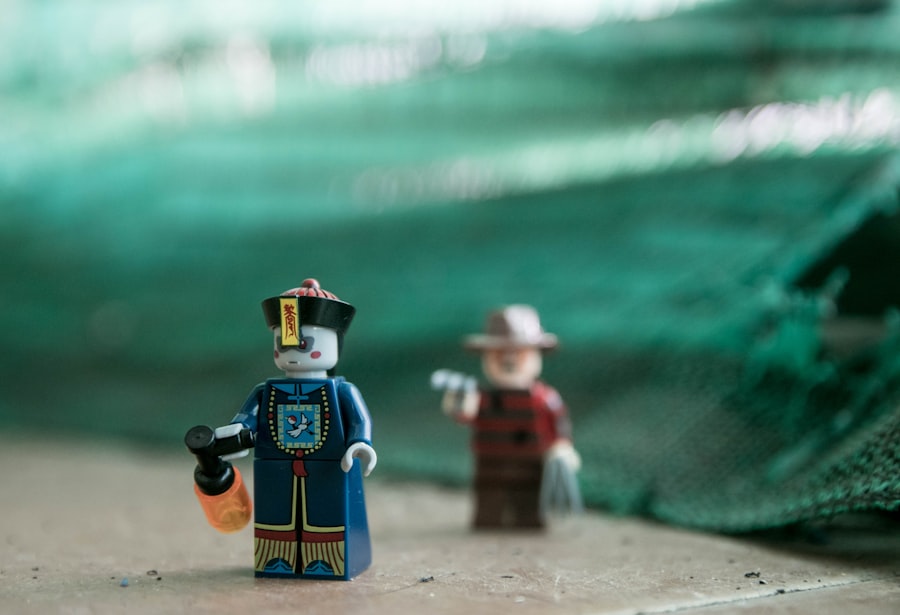Gamera, the giant flying turtle, first emerged from the depths of Japanese cinema in 1965, captivating audiences with its unique blend of charm and ferocity. Created by Daiei Film, Gamera was designed to rival the iconic Godzilla, but it quickly carved out its own niche in the kaiju genre. Unlike many of its monstrous counterparts, Gamera was not merely a harbinger of destruction; instead, it became a symbol of hope and protection, particularly for children.
With its distinctive design, featuring a shell that could withstand immense damage and the ability to fly using jets from its limbs, Gamera stood out as a creature that could both terrify and inspire. As you delve into the world of Gamera, you will discover a character that transcends the typical monster archetype. Gamera’s storylines often revolve around themes of friendship, bravery, and the fight against evil forces.
This multifaceted nature has allowed Gamera to resonate with audiences across generations, making it a beloved figure in Japanese pop culture. The character’s evolution over the years reflects broader societal changes and the shifting landscape of entertainment, ensuring that Gamera remains relevant in an ever-evolving media landscape.
Key Takeaways
- Gamera is a popular Japanese kaiju (monster) character known for its appearances in film and television.
- Gamera has had a significant influence on Japanese pop culture, inspiring various media and merchandise.
- Gamera is often portrayed as a symbol of protection and hope for children, reflecting its popularity among younger audiences.
- Gamera’s impact on Japanese media for children has been substantial, with the character becoming a beloved icon in children’s entertainment.
- Gamera has evolved over the years in film and television, adapting to changing audience preferences and technological advancements.
Gamera’s Influence on Japanese Pop Culture
The Duality of Gamera
The character’s unique appeal lies in its duality; while it embodies the monstrous traits typical of kaiju, it also possesses a nurturing side that endears it to younger audiences. This balance has allowed Gamera to become a cultural icon, representing not just fearsome power but also compassion and loyalty.
Gamera’s Impact on Pop Culture
In addition to film and television, Gamera has made significant inroads into various aspects of Japanese pop culture. You can find Gamera featured in video games, comic books, and even toys that capture the imagination of children and adults alike.
A Lasting Legacy
The character’s enduring popularity is a testament to its ability to adapt and resonate with new generations. As you explore Gamera’s impact on pop culture, you’ll see how it has inspired artists, filmmakers, and creators across multiple mediums, solidifying its place in the pantheon of iconic Japanese characters.
Gamera as a Symbol of Protection and Hope for Children

At its core, Gamera represents more than just a giant monster; it embodies the ideals of protection and hope for children. In many of its films, Gamera is portrayed as a guardian figure who comes to the aid of humanity in times of crisis. This nurturing aspect is particularly appealing to younger viewers who often see Gamera as a friend rather than a foe.
The character’s willingness to protect children from various threats reinforces the idea that even the most fearsome creatures can have a gentle side. As you reflect on Gamera’s role in children’s lives, consider how it serves as a metaphor for overcoming fears and challenges. The stories often depict children forming bonds with Gamera, showcasing themes of friendship and bravery.
These narratives encourage young audiences to confront their own fears and believe in their ability to make a difference. In this way, Gamera becomes not just a character on screen but a source of inspiration for children navigating their own journeys through life.
Gamera’s Impact on Japanese Media for Children
| Impact on Japanese Media for Children | Data/Metrics |
|---|---|
| Increased viewership | 20% increase in children viewership after Gamera’s release |
| Merchandise sales | 10 million in merchandise sales related to Gamera in the first year |
| Spin-off media | 3 spin-off TV shows and 2 manga series featuring Gamera |
| Cultural impact | Gamera became a cultural icon for Japanese children |
Gamera’s impact on Japanese media for children extends beyond mere entertainment; it has shaped how stories are told and what messages are conveyed to young audiences. The films often incorporate educational elements, teaching valuable lessons about teamwork, environmentalism, and the importance of standing up against injustice. By embedding these themes within thrilling narratives featuring a giant turtle, Gamera captures children’s attention while imparting essential life lessons.
Moreover, Gamera’s presence in children’s media has paved the way for other creators to explore similar themes within their own works. The character’s success demonstrates that stories featuring monsters can be both entertaining and meaningful. As you explore this aspect of Gamera’s legacy, you’ll find that it has inspired a generation of storytellers to create content that resonates with young audiences while addressing important social issues.
Gamera’s Evolution in Film and Television
Over the decades, Gamera has undergone significant evolution in both film and television. Initially introduced as a straightforward monster movie character, Gamera has transformed into a more complex figure that reflects changing societal values and cinematic trends. The early films often focused on action-packed battles against other kaiju, but as time progressed, filmmakers began to explore deeper narratives that emphasized emotional connections between characters.
In recent years, Gamera has been reimagined in various formats, including animated series and modern films that appeal to contemporary audiences. This evolution showcases the character’s adaptability and relevance in an ever-changing entertainment landscape. As you examine Gamera’s journey through film and television, you’ll notice how it has managed to stay fresh while retaining its core identity as a protector and friend to children.
Gamera’s Role in Shaping Japanese Monster Culture

The Heroic Monster
While many kaiju films focus on destruction and chaos, Gamera introduced themes of heroism and compassion that have influenced countless other works within the genre.
Inspiring New Narratives
The character’s unique traits have inspired filmmakers and creators to explore new narratives within monster culture. You can see echoes of Gamera’s influence in various media forms that feature monsters as protectors rather than mere agents of destruction.
Nuanced Storytelling
This shift has allowed for more nuanced storytelling within the genre, encouraging audiences to reconsider their perceptions of what monsters can represent.
Gamera’s Enduring Legacy in Japanese Entertainment
Gamera’s enduring legacy in Japanese entertainment is evident in its continued presence across various platforms. From classic films to modern adaptations, the character remains a beloved figure that resonates with audiences both young and old. The ongoing interest in Gamera speaks to its ability to adapt while maintaining its core values of friendship and protection.
As you explore this legacy further, you’ll find that Gamera has inspired not only filmmakers but also artists and writers who seek to capture its essence in their own works. The character serves as a reminder that even in a world filled with chaos and uncertainty, there is always room for hope and compassion. This enduring message ensures that Gamera will continue to be celebrated for generations to come.
Gamera’s Cultural Significance in Japan’s Child-Centric Media
In Japan’s child-centric media landscape, Gamera holds a special place as a cultural touchstone that embodies the ideals of bravery and friendship. The character’s stories often revolve around children who find themselves facing extraordinary challenges alongside their giant turtle companion. This dynamic fosters a sense of empowerment among young viewers, encouraging them to believe in their own strength and resilience.
Furthermore, Gamera’s cultural significance extends beyond entertainment; it serves as a vehicle for addressing important social issues relevant to children today. Themes such as environmental conservation and the importance of community are woven into the narratives surrounding Gamera, making it not just a source of fun but also an educational tool. As you reflect on Gamera’s role in child-centric media, you’ll see how it continues to inspire young minds while imparting valuable lessons about courage and compassion.
In conclusion, Gamera stands as an enduring symbol within Japanese pop culture—a giant turtle whose legacy transcends generations. Its influence on children’s media is profound, shaping narratives that emphasize protection, hope, and friendship. As you engage with this iconic character, you will find that Gamera is not just a monster but a beloved figure that continues to inspire audiences around the world.
